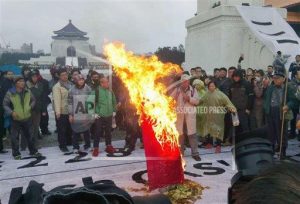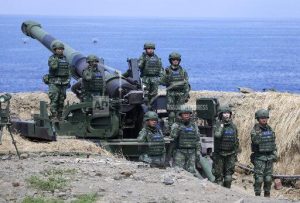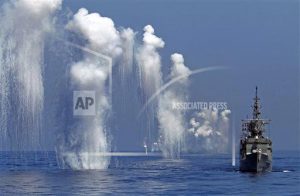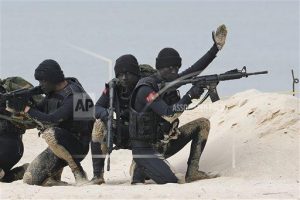Rising Tensions Between China and Taiwan and Growing U.S. Involvement

The first team of Taiwan artillerywomen poses for the press during the annual Han Kuang exercises in Pingtung County, Southern Taiwan, Thursday, May 30, 2019. (AP Photo/Chiang Ying-ying
September 27, 2019
Chinese aggression in the South China Sea and around the Taiwan Strait has been steadily increasing ever since Japan ceded the small Island off the coast of Eastern China to China following World War II.
This tension appears to be especially hostile in recent months and weeks as China consistently insists the Island nation is under their Communist control and demonstrates they are willing to legitimize these claims through action.
During the Cold War, the Defense Intelligence Agency, or DIA, would release unclassified reports on some of the major activities of the Soviet Union’s military program. This year is the first year in which we have taken similar steps, this time concerning Chinese militarization. China’s aggressive 9-dash line plan in the South China Sea, Russian joint military exercises, an overseas base in Djibouti, as well as the creation of a handful of artificial islands for the purpose of erecting military bases all signal to the U.S. that potential conflict could be brewing.
Director of the DIA, Army Lt. Gen. Robert P. Ashley Jr., said that China was, “on the verge of fielding some of the most modern weapon systems in the world. In some areas, it already leads the world.”
Neil Wiley, the director of analysis at the Defense Intelligence Agency, summarizes the issue: “The primary driver for two decades of Chinese military modernization has been the clear and consistent desire on the part of China to have a military option for the reunification of Taiwan.”
These claims by leading officials display the true weight of the conflict. Increased tension has marked the last weeks and months between the U.S., Taiwan, and China. The U.S. continues to sell large amounts of arms to the country and strongly supports its military developments. Taiwan has lost two of its stronger political allies to the Chinese, Kiribati, as well as the Solomon Islands. This enables the encroachment of Chinese influence, both economically and militarily, into waters controlled by U.S. allies ever since the conclusion of WW II. This now means that only 14 nations along with the Vatican recognize Taiwan as an independent country of China, to preserve economic relationships with the government in Beijing. Taiwan critically needs international support to survive in the long term and this economic choking is jeopardizing this.
Trump and his administration have demonstrated their disapproval of this aggression in the sale of 108 Abrams tanks and 250 stinger missiles to the Taiwanese for the price of around $2.2 billion. Trump announced earlier in August that he has given his approval on the sale of a further 66 F-16v fighter jets in a deal valued around $8 billion. This is significant because these actions are a direct response to China’s own respective aggressive and militarization. America’s top representative in Taiwan, Brent Christensen, said that Taiwan is expected to continue this rapid military spending to “commensurate the threats” that Beijing was making toward the island nation.
















